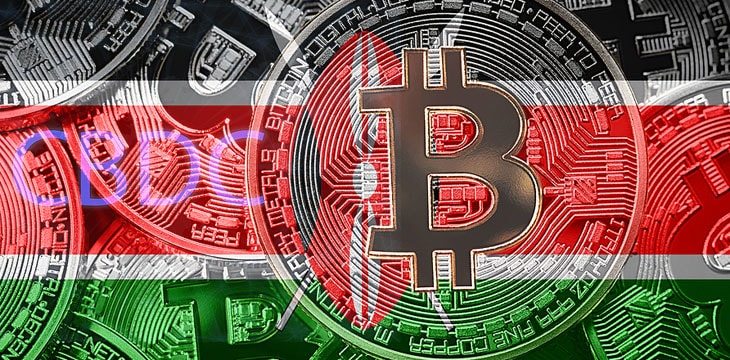Earlier this year, the Central Bank of Kenya (CBK) stated that it did not view the issuance of a digital currency as a “compelling priority.” However, it indicated that it would continue to monitor developments in this area to inform future decisions. This announcement followed the central bank’s call for public input on the potential introduction of a Central Bank Digital Currency (CBDC) in February of the previous year, marking a shift from its initial stance against crypto assets, though it ultimately chose not to proceed.
So, what exactly is a CBDC? To define it, one must first grasp the concept of a digital currency. A digital currency is a form of payment existing exclusively in electronic form and exchangeable for a predetermined amount equivalent to the local fiat currency. A Central Bank Digital Currency (CBDC) is essentially a digital representation of a country’s currency issued by its central bank. In essence, it functions like conventional money but in electronic format. Unlike other digital forms issued by banks, CBDC is intended for everyday transactions and accessible to anyone. It essentially represents a digital version of the nation’s regular currency.
Comparing CBDC to cryptocurrency, many people tend to conflate the two terms, but they are distinct in terms of use, regulation, volatility, stability, and circulation.
Digital currency encompasses any online currency issued by central banks, rendering it legal tender and centralized. The Central Bank maintains the value of CBDC to minimize market/economic fluctuations through a series of fiscal policies, often related to other currencies, in an effort to stabilize the economy.
Conversely, cryptocurrency refers to a type of digital currency secured by encryption and stored on a blockchain database. These currencies are generated by users themselves through a process known as “mining.” Cryptocurrency is decentralized and regulated by their respective communities, with authorities having no control over their use.
Now, let’s consider the benefits and relevance of CBDC in Kenya:
- Enhanced Efficiency for Cross-Border Payments: Central bank digital currencies (CBDCs) have the potential to reduce cross-border payment processing times from days to seconds, as reported by the Bank of International Settlements (BIS). Additionally, it may lead to cost savings of up to 50.0 percent. With CBDCs streamlining cross-border payments, Kenyan exporters could experience faster and more reliable transactions, bolstering their competitiveness in the global market. Furthermore, potential cost reductions could significantly improve profit margins for Kenyan businesses, offering much-needed financial relief. Additionally, this streamlined process could positively impact the exchange rate, boosting investor confidence in Kenya’s economy and potentially strengthening the local currency against foreign currencies. This, in turn, could make Kenyan exports more affordable and attractive to international buyers, offering a potential lifeline to the struggling export sector and fostering economic growth.
- Alternative Credit Information for Financing: Traditionally, credit information used for evaluating loan applications is obtained from various sources such as banks, credit bureaus, and financial institutions. In Kenya, this disproportionately affects Small and Medium Enterprises (SMEs), which often lack established financial records, particularly with microfinance banks. Transactions conducted through CBDCs are digitally recorded, creating a transparent and traceable financial trail. If made accessible and reliable, this data could serve as an alternative credit reference for individuals and businesses. Given that the SME sector in Kenya is projected to contribute 50.0 percent to the Gross Domestic Product (GDP) in the next three years, access to financing for SMEs is now more crucial than ever.
Which Countries Are Already Exploring CBDCs?
The Central Bank of Kenya recently noted that global interest in CBDCs is on the rise. In fact, 130 countries, representing 98.0 percent of global GDP, are exploring CBDCs. Just a year ago, in May 2020, only 35 countries were considering CBDCs, and now, a record 64 countries are in an advanced phase of exploration (development, pilot, or launch). Among the G20 countries, 19 are in the advanced stage of CBDC development, with nine already in pilot phases. Almost every G20 nation has made significant progress and investments in these projects over the past six months. Eleven countries have fully launched digital currencies. China’s pilot program, currently serving 260 million people, is being tested in over 200 scenarios, including public transit, stimulus payments, and e-commerce.
In Africa, the South African Reserve Bank is experimenting with a wholesale CBDC for interbank transfers as part of the second phase of its Project Khokha. The Bank of Ghana is testing a general-purpose retail CBDC called the e-Cedi, while the Central Bank of Nigeria (CBN) launched the eNaira, its digital currency, in October 2021. The eNaira project aims to foster financial inclusion, enhance cross-border transaction efficiency, and support the growth of the Nigerian digital economy.
Risks and Considerations
While CBDC implementation offers potential benefits, it also presents challenges in Kenya, including:
- Digital Infrastructure: The success of CBDCs hinges on robust digital infrastructure, including internet connectivity and access to digital devices. Many African countries are still lagging in this area, potentially limiting the reach of CBDCs.
- Cybersecurity: The implementation of CBDCs raises concerns about cybersecurity, as digital currencies are vulnerable to hacking and fraud. Kenya must invest in strong cybersecurity measures to mitigate these risks.
- Regulatory Framework: Establishing a comprehensive legal and regulatory framework is vital to ensure the successful implementation and adoption of CBDCs. Kenya must develop clear guidelines and policies to govern CBDC usage and operations.
Kenya stands at a crucial juncture in the digital currency landscape. While the Central Bank of Kenya has adopted a cautious approach, the growing global interest in Central Bank Digital Currencies (CBDCs) suggests transformative potential for the nation’s economy. The benefits are clear, from expediting cross-border payments to boosting the competitiveness of Kenyan exports and offering alternative credit references that could revolutionize SME financing. However, significant challenges loom, including the need for robust digital infrastructure, strong cybersecurity measures, and a comprehensive regulatory framework. As over 130 countries, including fellow African nations, progress in their CBDC efforts, Kenya must navigate these obstacles with strategic foresight to ensure its digital future aligns with both global advancements and local needs, paving the way for a financially inclusive and digitally empowered nation.


















